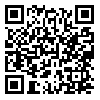دوره 15، شماره 6 - ( 8-1403 )
جلد 15 شماره 6 صفحات 758-745 |
برگشت به فهرست نسخه ها
Download citation:
BibTeX | RIS | EndNote | Medlars | ProCite | Reference Manager | RefWorks
Send citation to:



BibTeX | RIS | EndNote | Medlars | ProCite | Reference Manager | RefWorks
Send citation to:
Ahmadi Machiani S, Rezaei S, Saberi A, Keymoradzadeh A, Bakhshayesh B, Rohampour K. Bihemispheric tDCS Improves Memory and Alters EEG Parameters in Patients With Mild Cognitive Impairment. BCN 2024; 15 (6) :745-758
URL: http://bcn.iums.ac.ir/article-1-2888-fa.html
URL: http://bcn.iums.ac.ir/article-1-2888-fa.html
Bihemispheric tDCS Improves Memory and Alters EEG Parameters in Patients With Mild Cognitive Impairment. مجله علوم اعصاب پایه و بالینی. 1403; 15 (6) :745-758
چکیده:
Introduction: Mild cognitive impairment (MCI) is a transitional state between normal aging and dementia. Bihemispheric transcranial direct current stimulation (tDCS) modulates cortical excitability and interhemispheric interaction. The dorsolateral prefrontal cortex (DLPFC) is involved in executive control and working memory. The present study investigates whether stimulating the left DLPFC while suppressing the right DLPFC can influence brain waves and cognitive abilities in patients with MCI.
Methods: A total of 36 MCI patients were randomly allocated into active and sham tDCS groups. Ten sessions of active or sham tDCS were applied. The anode electrode was placed on the left DLPFC (F3) and the cathode on the right (F4). Memory assessment was performed using the Wechsler memory scale-revised (WMS-R) before, immediately after, and three months after the intervention. Resting-state electroencephalography (EEG) was performed before and immediately after tDCS. The absolute and relative powers of different frequency bands and the coherence between electrodes were calculated using the NeuroGuide software, version 3.2.4.
Results: Active tDCS improved the memory quotient and all WMS-R subscales in MCI patients immediately and three months after tDCS application (P<0.01). The absolute power of the delta band and the relative power of the delta and theta bands reduced significantly (P<0.05). The relative alpha band power and frontotemporal coherence were increased. A frontal asymmetry was also detected after active tDCS.
Conclusion: Bihemispheric tDCS of the DLPFC leads to sustained cognitive improvements and beneficial changes in brain activity in MCI patients, suggesting its potential as an effective therapeutic intervention.
Methods: A total of 36 MCI patients were randomly allocated into active and sham tDCS groups. Ten sessions of active or sham tDCS were applied. The anode electrode was placed on the left DLPFC (F3) and the cathode on the right (F4). Memory assessment was performed using the Wechsler memory scale-revised (WMS-R) before, immediately after, and three months after the intervention. Resting-state electroencephalography (EEG) was performed before and immediately after tDCS. The absolute and relative powers of different frequency bands and the coherence between electrodes were calculated using the NeuroGuide software, version 3.2.4.
Results: Active tDCS improved the memory quotient and all WMS-R subscales in MCI patients immediately and three months after tDCS application (P<0.01). The absolute power of the delta band and the relative power of the delta and theta bands reduced significantly (P<0.05). The relative alpha band power and frontotemporal coherence were increased. A frontal asymmetry was also detected after active tDCS.
Conclusion: Bihemispheric tDCS of the DLPFC leads to sustained cognitive improvements and beneficial changes in brain activity in MCI patients, suggesting its potential as an effective therapeutic intervention.
نوع مطالعه: Original |
موضوع مقاله:
Cognitive Neuroscience
دریافت: 1402/11/27 | پذیرش: 1403/5/8 | انتشار: 1403/8/11
دریافت: 1402/11/27 | پذیرش: 1403/5/8 | انتشار: 1403/8/11
| بازنشر اطلاعات | |
 |
این مقاله تحت شرایط Creative Commons Attribution-NonCommercial 4.0 International License قابل بازنشر است. |





